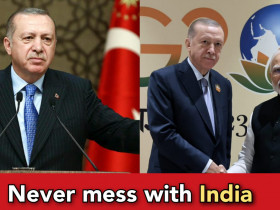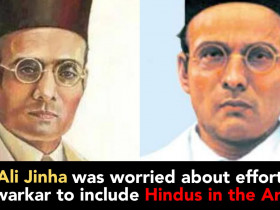Jews have had to face the far end of the stick in terms of existential and civilizational extinction multiple times in every millennium since the inception of Abrahamic epistemology and religiosity from the age Moshe in Pharaonic Egypt, to conception of Zionism in the 20th century. Having barely survived multiple extinction like episodes in their history, today’s Zionist state is, as fate would have it, not only feared by its Islamic neighborhood, but is also looked up to as a gold standard in areas like strategic & preemptive offense, foreign affairs, espionage, coercive diplomacy and more importantly timely implementation of defense technology.
Before one dives into the reasons behind the decisive Israeli victory in the 6 Day war, it is essential to understand the transformation of the Jewry from an oppressed class to a community capable of instilling the wrath of god down the spines of its enemies. The obstacles and problems faced during & following the formation of the modern state of Israel throw light on this very transformation. The idea of a Zionist state spawned in a Jewish nationalist movement at the turn of the 20th century. Zionism was dubbed as the “Solution to the Jewish question.” With the upsurge of Jewry nationalism, the return to the Holy Land (according to the Hebrew Bible) became an unquenchable thirst for the Jewish community.
After the fall of the Ottoman Empire at the end of the Great War in 1918, the idea of formation of a Jewish state in the Middle East had a large consensus amongst the western superpowers. The League of nations, which was a UN equivalent at the time, granted “the Mandate to rule Palestine” which was backed by the Balfour Declaration (1917) by the British crown. In the years leading up to the second world war, the Arabs, who were the new native settlers of Palestine had a hard time to deal with the mismatching identity of the Jewish culture. To them it seemed like another European Colonial occupation as the returning Jewry had been a practitioner of European Judeo-Christian Values.
WWII had struck on the Jews like a shockwave and the allied victory in the war jolted them back from extinction. Jews realized the importance of a religious nation-state as a result of the vile experience the community had to endure under the Protestant & Lutheran Nazi Reich.
In early mid-20th century after having to fight for a small piece of partitioned land, when the notion of a bloodless diplomatic war between the USSR and USA was brewing in the air, Israel faced its version of the Battle of Thermopylae, stacked in the center, around an unstable and hostile neighborhood. The United Arab Republic (Egypt and Syria), Jordan, Iraq & Lebanon had joined hands, an unprecedented event to uproot what they saw as an occupation of Palestinian Land. The Arabs’ disdain for Jews was even more so civilizational and religious, as Islamic scripture had indications of appropriations of the Jews, and the ways to go about it.
The Six-day war, as it comes to be known today, started to take shape in 1964 when the Palestinian Liberation Organization (PLO) was formed to destroy “Zionist and Imperialist Presence”. This was followed up with militarization of the Sinai Peninsula by Egypt in early 1967. On 30.05.1967 Jordan escalated the situation by forming a defense and strategic pact with Egypt and the latter blocked the Straits of Tiran and marched its army up to the southern border of Israel while being in violation of the UNEF guidelines. Israel on the other hand had already warned its Arab neighbors that the blockade of the Straits of Tiran would be considered as an act of war. Israel formed a GNU and made the decision on the 4th of June to go to war with all its neighbors.
The quintessential ingredient
Egyptian Air Defence foundation was extremely poor, with no landing strips yet furnished with asphalted airplane covers, not equipped for ensuring Egypt’s warplanes in case of an assault. The Israeli warplanes took off over the Mediterranean before moving in the direction of Egypt. Flying below radar, the Israeli pilots came in speed and well beneath the absolute bottom at which Egypt’s SA-2 surface-to-air rocket batteries could cut down an airplane. At 0745hrs on 05.06.1967, the Israeli Air Force propelled a decisive airstrike that devastated most of the Egyptian Air Force on the ground. The first Israeli wave attacked 11 bases, catching much of the Egyptian Air Force on the ground and destroying them before they got airborne. Following Syrian, Jordanian, and Iraqi assaults in counter, the Israeli Air Force extended the outreach of the airstrikes to the air bases in those nations. 1800hrs the same day the Egyptian, Jordanian and Syrian Air Forces, with around 450 airplanes, were crushed. Israeli forces were likewise extremely effective in incapacitating 18 landing strips in Egypt, temporarily halting any Egyptian Air Force activities for the length of the war. The preemptive strike by Israeli Air Force is still considered very controversial amongst Palestinian apologists. Now part of every military strategy books, the shock and awe tactics used by the Israelis has been dubbed as the highlight of the Six-Day war. Everything went downhill for the Arab forces after the loss of their air superiority before their war had even begun. Egypt lost control of Sinai Peninsula to the Israelis, while the Jordanians lost Gaza strip. After six-day war the premier of Egypt, G A Nasser resigned in shame. The war became engraved in the psyche of Egypt.
The middle eastern tussle of 1967 for power over the seat of Palestine turned the geopolitical tide in favor of Jewish state, as if Karma was in action to account for all the pain, suffering and humiliation the Jews had undergone for millennia. The decision they unanimously took was to strive for a common identity of Zion as a deterrence in the face of extinction. And this changed their perception from a weak minority to a feared proponent of renaissance and reform in Arabia.











